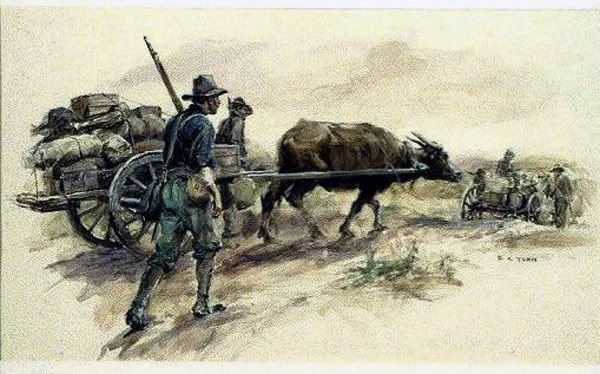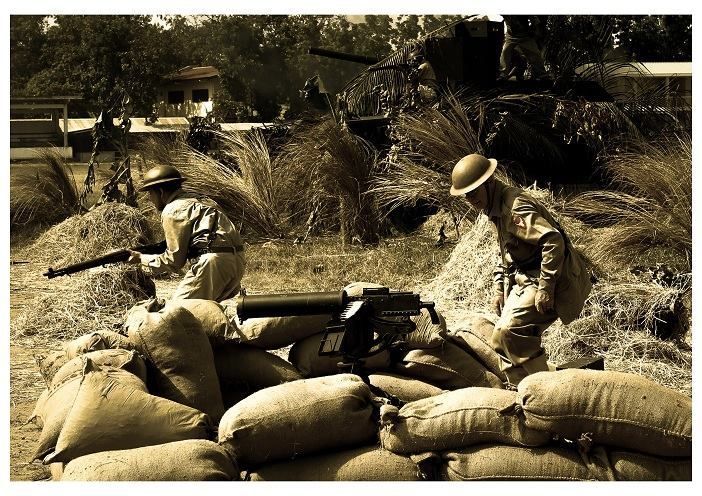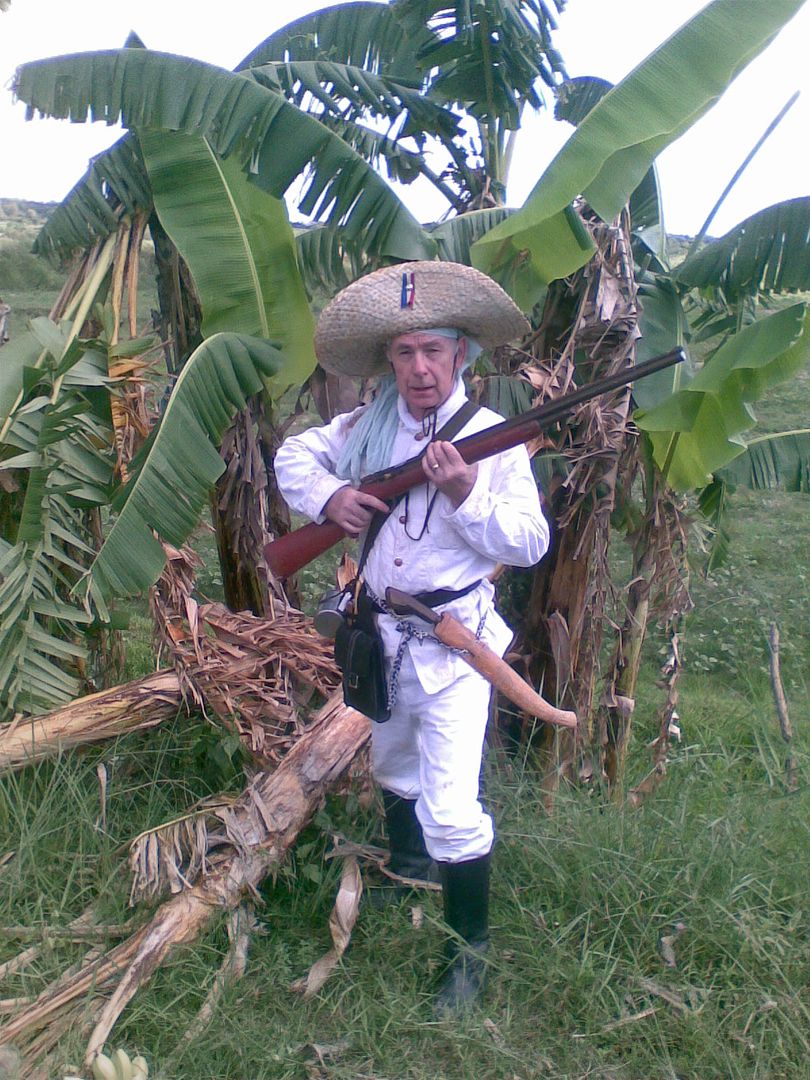Post by legionnaire on Sept 11, 2008 22:58:26 GMT -5
Lt. Edmund L. Gruber was the author of the stirring Field Artillery march "The Caissons Go Rolling Along,"
which was popularized by John Philip Sousa.
Gruber wrote this famous field artillery song when he was a lieutenant in the Fifth Field Artillery in the Philippines.
In April 1908, the First Battalion came from the States to relieve the Second. Lieutenant Gruber was asked to write a song that would symbolize the spirit of the reunited regiment.
The song was inspired by an incident that occurred during a difficult march across the Zambales Mountains, which was made by the Second Battalion in 1907. Lieutenant Gruber was sent ahead with a detachment to select the route and repair stream crossings. In the afternoon the battalion was so far behind that he and a scout sergeant went to the top of a high peak in order to see what progress the main body was making. The rolling country was visible for miles, but there was no sign of the battalion. Listening carefully, he finally heard the distant rumble of the carriages, which was soon punctuated by the echoing shouts and commands of the drivers as they urged their teams along.
The sergeant turned to Lieutenant Gruber and said, "They’ll be all right, lieutenant, if they keep ‘em rolling." As the battalion neared camp on the other side of the divide, Lieutenant Gruber heard one of the chiefs of sections call out to his drivers,
"Come on, keep ‘em rolling!" That expression seemed to characterize the spirit of the battalion.

In March 1908, about a year after Gruber overheard that section chief in the mountains, six young lieutenants - including William Bryden and Robert M. Danford - gathered in his thatch hut and set to writing a song for the field artillery.
"A guitar was produced and tuned and - in what seemed to us a few moments - as if suddenly inspired, "Snitz" fingered the melody of the now-famous song," recalled Danford, who retired as a major general. Gruber always acknowledged with thanks the contribution of Danford and Bryden who had helped him complete the lyrics.
Gruber taught the song to officers of the 1st Battalion as they arrived at Fort Stotsenburg. Wrote Danford: "A few evenings later at the post reception for the new unit and adieu to the old, 'The Caisson Song' was given its first public rendition. Its popularity was instantaneous, and almost in no time all six of the regiments then composing the U.S. Field Artillery adopted it."
The U. S. Field Artillery Marching Song
During the last days of World War I, senior artillery leaders wanted an official marching song. An artillery officer who did not know Gruber and thought "The Caisson Song" dated back to the Civil War, gave the piece to noted composer and bandmaster John Philip Sousa and asked him to fix it up.
Sousa incorporated Gruber's piece into his composition, which he titled, "The U.S. Field Artillery March" - a few beginning measures being his own and the balance from Gruber.
The resulting song became a blockbuster record during World War I, selling about 750,000 copies. Gruber heard of it and asked Sousa, "How about some money, since I wrote the song?" Embarrassed, the innocent Sousa made certain Gruber got his royalties.
www.bragg.army.mil/History/Commanders/Commanders%20Pages/Gruber/CaissonsGoRolling.htm
which was popularized by John Philip Sousa.
Gruber wrote this famous field artillery song when he was a lieutenant in the Fifth Field Artillery in the Philippines.
In April 1908, the First Battalion came from the States to relieve the Second. Lieutenant Gruber was asked to write a song that would symbolize the spirit of the reunited regiment.
The song was inspired by an incident that occurred during a difficult march across the Zambales Mountains, which was made by the Second Battalion in 1907. Lieutenant Gruber was sent ahead with a detachment to select the route and repair stream crossings. In the afternoon the battalion was so far behind that he and a scout sergeant went to the top of a high peak in order to see what progress the main body was making. The rolling country was visible for miles, but there was no sign of the battalion. Listening carefully, he finally heard the distant rumble of the carriages, which was soon punctuated by the echoing shouts and commands of the drivers as they urged their teams along.
The sergeant turned to Lieutenant Gruber and said, "They’ll be all right, lieutenant, if they keep ‘em rolling." As the battalion neared camp on the other side of the divide, Lieutenant Gruber heard one of the chiefs of sections call out to his drivers,
"Come on, keep ‘em rolling!" That expression seemed to characterize the spirit of the battalion.

In March 1908, about a year after Gruber overheard that section chief in the mountains, six young lieutenants - including William Bryden and Robert M. Danford - gathered in his thatch hut and set to writing a song for the field artillery.
"A guitar was produced and tuned and - in what seemed to us a few moments - as if suddenly inspired, "Snitz" fingered the melody of the now-famous song," recalled Danford, who retired as a major general. Gruber always acknowledged with thanks the contribution of Danford and Bryden who had helped him complete the lyrics.
Gruber taught the song to officers of the 1st Battalion as they arrived at Fort Stotsenburg. Wrote Danford: "A few evenings later at the post reception for the new unit and adieu to the old, 'The Caisson Song' was given its first public rendition. Its popularity was instantaneous, and almost in no time all six of the regiments then composing the U.S. Field Artillery adopted it."
The U. S. Field Artillery Marching Song
During the last days of World War I, senior artillery leaders wanted an official marching song. An artillery officer who did not know Gruber and thought "The Caisson Song" dated back to the Civil War, gave the piece to noted composer and bandmaster John Philip Sousa and asked him to fix it up.
Sousa incorporated Gruber's piece into his composition, which he titled, "The U.S. Field Artillery March" - a few beginning measures being his own and the balance from Gruber.
The resulting song became a blockbuster record during World War I, selling about 750,000 copies. Gruber heard of it and asked Sousa, "How about some money, since I wrote the song?" Embarrassed, the innocent Sousa made certain Gruber got his royalties.
www.bragg.army.mil/History/Commanders/Commanders%20Pages/Gruber/CaissonsGoRolling.htm
The Caissons Go Rolling Along
By Edmund L. Gruber
Over hill, over dale
As we hit the dusty trail,
And those caissons go rolling along.
In and out, hear them shout,
Counter march and right about,
And those caissons go rolling along.
Refrain:
Then it's hi! hi! hee!
In the field artillery,
Shout out your numbers loud and strong,
For where e'er you go,
You will always know
That those caissons go rolling along.
In the storm, in the night,
Action left or action right
See those caissons go rolling along
Limber front, limber rear,
Prepare to mount your cannoneer
And those caissons go rolling along.
Refrain:
Was it high, was it low,
Where the hell did that one go?
As those caissons go rolling along
Was it left, was it right,
Now we won't get home tonight
And those caissons go rolling along.
By Edmund L. Gruber
Over hill, over dale
As we hit the dusty trail,
And those caissons go rolling along.
In and out, hear them shout,
Counter march and right about,
And those caissons go rolling along.
Refrain:
Then it's hi! hi! hee!
In the field artillery,
Shout out your numbers loud and strong,
For where e'er you go,
You will always know
That those caissons go rolling along.
In the storm, in the night,
Action left or action right
See those caissons go rolling along
Limber front, limber rear,
Prepare to mount your cannoneer
And those caissons go rolling along.
Refrain:
Was it high, was it low,
Where the hell did that one go?
As those caissons go rolling along
Was it left, was it right,
Now we won't get home tonight
And those caissons go rolling along.






